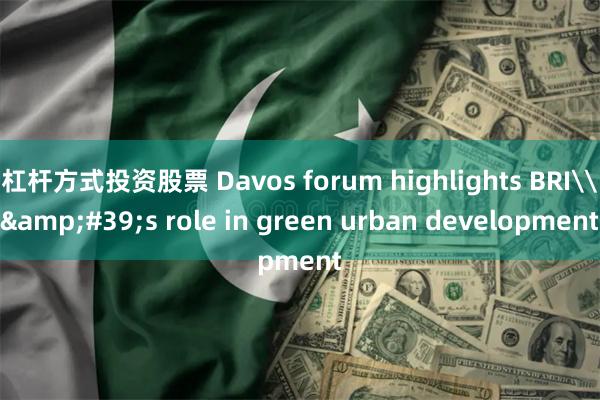
A session titled "What Does the Belt and Road City Look Like?" is held during the 2024 Summer Davos in Dalian, Liaoning province, June 26, 2024. [Photo by Wang Yiming/China.org.cn]

Experts and government officials emphasized the crucial role of the Belt and Road Initiative (BRI) in promoting green and sustainable urban development on Wednesday at the 2024 Summer Davos in Dalian, northeast China's Liaoning province.
Yusuf Tuggar, minister of foreign affairs of Nigeria, highlighted several infrastructure projects in Nigeria built by companies from Dalian, citing examples such as new railway lines and the deep sea port.
"The BRI is decongesting megacities like Lagos, making them more livable," he said. Tuggar stressed that sustainability should be considered from the viewpoint of the average Nigerian, with a focus on mobility, urban living, and access to essential amenities like electricity.
"The advantage of the Belt and Road is that it's being built in a sustainable and green way. We must always view it from an African perspective," he added.
Lourdes Casanova, senior lecturer and director of the Emerging Markets Institute at Cornell University, echoed Tuggar's viewpoints. "As the minister from Nigeria said, if you don't have trains, roads or enough energy, people will resort to more polluting sources like cutting trees for firewood," she said.
Casanova pointed out that BRI provides emerging markets with investment alternatives beyond the United States and Europe. "China is able to execute infrastructure projects in trains, ports and electricity for emerging markets. These projects are done on time and cost-effectively, opening up opportunities for these markets," she said.
Gao Guoli, president of the China Center for Urban Development, discussed the extensive cooperation between China and BRI partner countries over the past decade in green development, park construction, climate change response and biodiversity.
According to Gao, these collaborations include building floating photovoltaic power stations, low-carbon demonstration parks, implementing South-South cooperation plans, and carrying out biodiversity corridor projects. "These efforts have optimized the energy structure and enhanced the capacity of partner countries to address climate change and biodiversity protection," Gao said.
Ma Jun, chairman of the Green Finance Committee of the China Society for Finance and Banking, emphasized the importance of green finance in supporting sustainable projects. "China has built a large green lending market, supporting projects like renewable energy and low-carbon transportation," he said, adding that many developing countries lack the standards and mature green finance markets needed for refinancing.
Ma highlighted the establishment of the Green Investment Principle for the Belt and Road, launched in 2018 to build capacity in emerging markets. "We've also set up many working groups with the goal of training 100,000 specialists in green finance within emerging markets by 2030," he said, stressing the importance of this initiative in fostering local green financial systems.
Follow China.org.cn on Twitterand Facebookto join the conversation.
ChinaNews App Download杠杆方式投资股票
greenBeltlikeandfrom发布于:北京市声明:该文观点仅代表作者本人,搜狐号系信息发布平台,搜狐仅提供信息存储空间服务。